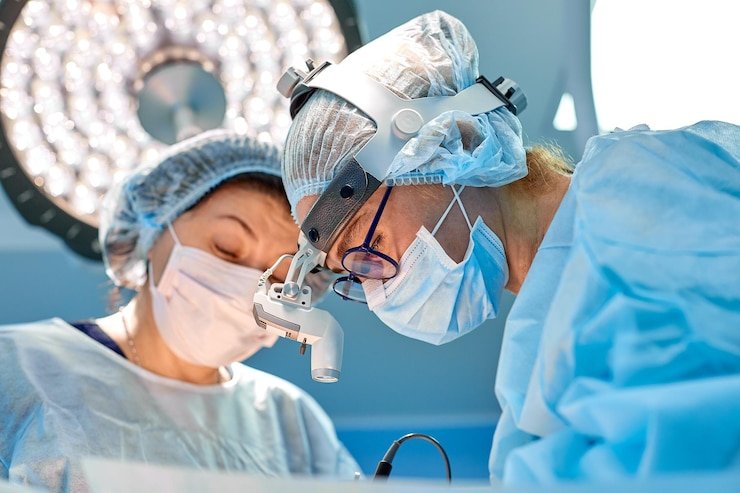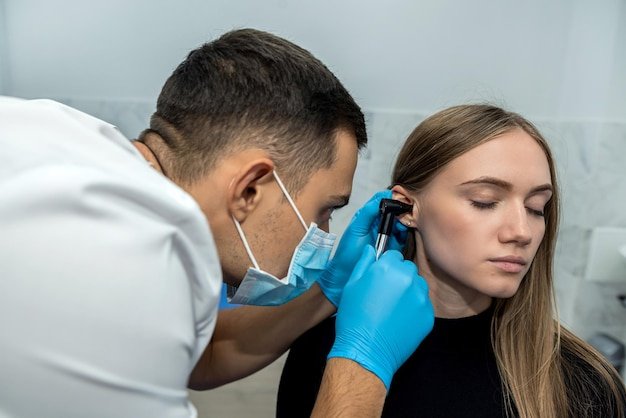Advancements and Innovations in Head and Neck Surgery.
Head and neck surgery is a specialized field within the broader realm of otolaryngology, focusing on the diagnosis and treatment of conditions affecting the head, face, neck, and related structures. Over the years, advancements in medical technology and surgical techniques have revolutionized the landscape of head and neck surgery, offering patients improved outcomes, reduced recovery times, and enhanced precision in diagnosis and treatment.
Diagnostic Precision
- Imaging Technology: Modern imaging technologies, such as computed tomography (CT), magnetic resonance imaging (MRI), and positron emission tomography (PET), have greatly enhanced the precision of diagnostic processes. These tools provide detailed views of the anatomy, allowing surgeons to visualize abnormalities, plan surgeries, and navigate complex structures with greater accuracy.
- 3D Printing: The integration of 3D printing technology has brought a new dimension to preoperative planning. Surgeons can create patient-specific models of the head and neck, enabling them to practice procedures, anticipate challenges, and customize treatment plans based on the unique anatomy of each individual.
Surgical Techniques
- Minimally Invasive Procedures: The advent of minimally invasive techniques has transformed the field of head and neck surgery. Endoscopic procedures, robotic surgery, and laser technology allow surgeons to perform intricate surgeries through small incisions, resulting in reduced trauma, faster recovery times, and minimized scarring for patients.
- Robot-Assisted Surgery: Robotics have become valuable tools in head and neck surgery, providing surgeons with enhanced precision and dexterity. Robot-assisted surgery is particularly beneficial for complex procedures, such as tumor removals and reconstructive surgeries, where meticulous movements are crucial.
- Laser Technology: Lasers are widely utilized in head and neck surgeries for their precision and ability to minimize bleeding. Laser-assisted procedures are employed in various applications, including the removal of tumors, correction of vocal cord issues, and treatment of vascular malformations.
Treatment Modalities:
- Immunotherapy: Immunotherapy has emerged as a promising treatment option for certain head and neck cancers. By harnessing the body’s immune system to target and destroy cancer cells, immunotherapy has shown effectiveness in improving survival rates and reducing the side effects associated with traditional treatments.
- Targeted Therapies: Targeted therapies, which specifically target cancer cells while sparing healthy tissues, have become integral in the management of head and neck cancers. These therapies aim to disrupt the specific molecular pathways that drive the growth of cancer cells, offering a more tailored and effective approach.
Patient-Centric Care:
- Reconstructive Surgery: Advances in reconstructive surgery have significantly improved the quality of life for patients undergoing head and neck procedures. Surgical techniques, such as microvascular reconstruction and tissue engineering, allow for functional and aesthetic restoration following extensive surgeries.
- Multidisciplinary Approach: Head and neck surgery often involves collaboration among various medical specialists, including oncologists, radiologists, and speech therapists. This multidisciplinary approach ensures comprehensive care, addressing not only the surgical aspects but also the broader impact on patients’ overall well-being.
Conclusion:
The field of head and neck surgery has witnessed remarkable progress, driven by technological innovations and a commitment to patient-centric care. As advancements continue to unfold, the future holds promise for further improvements in diagnostic precision, surgical techniques, and treatment modalities, ultimately contributing to better outcomes and enhanced quality of life for individuals facing head and neck conditions.








